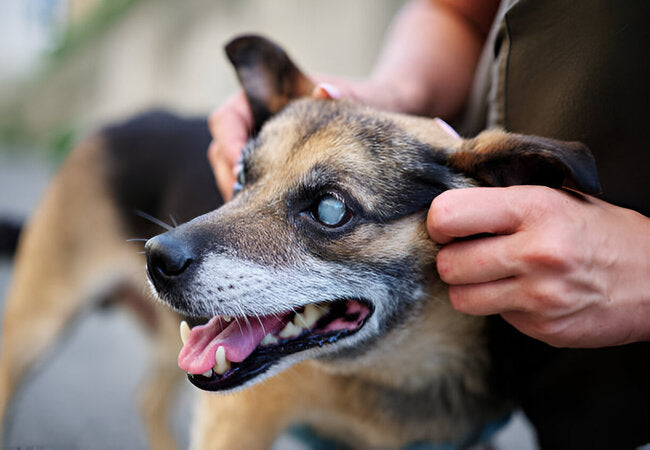2025 Vet Compassion: What to Expect When Adopting a Blind Dog 🐶💖

In this article
2025 Vet Compassion: What to Expect When Adopting a Blind Dog 🐶💖
By Dr. Duncan Houston BVSc
Hi, I’m Dr Duncan Houston BVSc, veterinarian and founder of Ask A Vet. Adopting a blind dog is a deeply fulfilling journey. With proper care, patience, and love, blind dogs can flourish just as much as sighted ones. This 2025 guide covers adjustments, training, medical needs, and enriching life with your new best friend. 😊
1. Is Adopting a Blind Dog Right for You?
- Emotional readiness: These dogs need patience and calm reinforcement.
- Time & environment: Safe, predictable spaces; consistent routines.
- Willingness to adapt: Use scent, sounds, and structured training aids.
2. First Steps: Vet Visit & Assessing Real Needs
- See a veterinary ophthalmologist to rule out painful conditions like glaucoma or cataracts.
- Ask about vision potential—some dogs have partial sight that can improve post-treatment.
- Plan follow-ups: some conditions are static; others need monitoring.
3. Safe & Navigable Home Setup 🏠
- Keep furniture layout constant: Dogs learn spatial mapping; changes cause distress.
- Clear walking paths & remove hazards—watch for sharp edges and stairs, use baby gates.
- Use textures, scents, bells: Rugs guide pathways; other pets or humans wear bells to help locate.
- Start small: Let them explore a single room first, later expanding the space gradually.
4. Training Tips: Voice, Touch & Positive Reinforcement
- Use soft voice cues: Say “step down,” “watch,” “good,” paired with treats.
- Clicker training: Effective for learning sequences and building confidence.
- Reinforce location: Keep bowls, bed, leash point fixed so scent association builds familiarity.
5. Enrichment & Bonding 🧩
- Sensory toys (squeakers, scent puzzles) engage smell and hearing.
- Pair with a sighted dog or companion for confidence-building.
- Outdoor walks: use consistent routes—blind dogs adapt and can alert to dangers like rescue dog Moogan did.
6. Socialization & Routine
Blind dogs thrive on consistency.
- Introduce new spaces slowly—use leash guidance, let them bump gently, and learn the topology.
- Keep feeding/walk times consistent to reduce stress.
7. Health & Ongoing Care
- Routine vet visits to monitor eye comfort and systemic health.
- Continue any medications or drops prescribed for the underlying eye disease.
- Maintain parasite prevention and general wellness checkups like sighted dogs.
8. Embracing the Joys of Blindness
Blind dogs are resilient—wonderfully loving, intuitive, and often deeply bonded with their families. Senior adopter stories show transformation and joy: Ziggy the cavoodle and Velcro the senior dog found new life and loyal homes.
9. Pitfalls to Avoid & Tips for Success
- Don't rearrange the home layout.
- Never punish for bumping—it's learning, not misbehavior.
- Alert them verbally before touching or entering a room.
- Always guide near stairs or drop-offs with a leash or a physical barrier.
10. Encouragement & Final Thoughts 🏁
Adopting a blind dog may seem daunting—but it's profoundly rewarding. With thoughtful care, nurturing, and medical oversight, blind dogs live rich, fulfilling lives. As Moogan proved, their instincts and trust in you can offer safety, joy, and companionship beyond sight.
Thinking of bringing a blind dog into your family? Download the Ask A Vet app for tailored step-by-step guidance—from orientation, safety products (like textured mats or bells), to vet check reminders. You’ll also get support on sensory toys and enriching routines via Woopf and Purrz. Your life—and theirs—will be brighter together. 📱❤️






